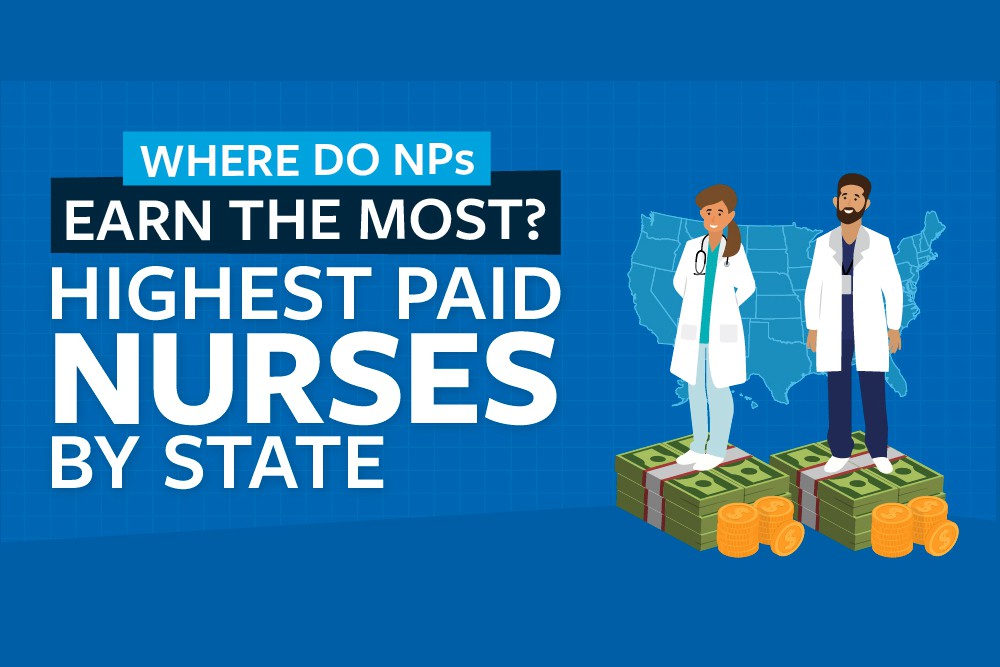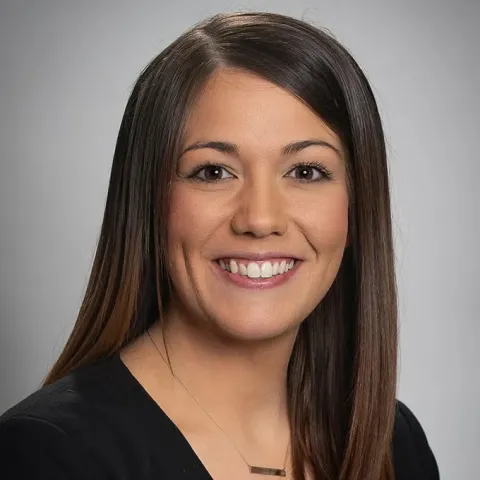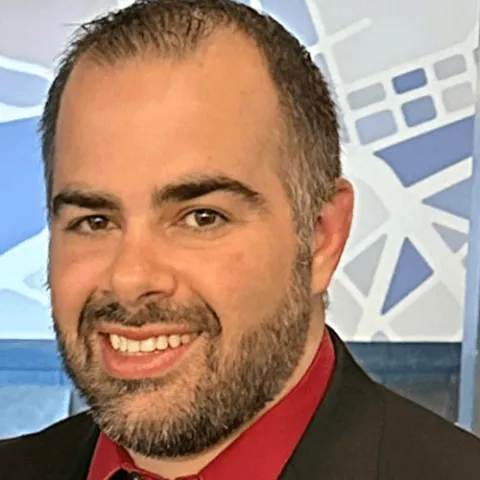
Where Do NPs Earn the Most? Highest Paid Nurse Practitioners by State
Nurse practitioners (NPs) are advanced practice registered nurses who provide medical care to a range of patients. They do so in various settings, such as hospitals, nursing homes, clinics, and acute care facilities. Though state laws that govern the autonomy of the profession differ, nurse practitioners fill a valuable need within the health care system.
To learn more, check out the infographic created by Rockhurst University’s Online MSN-FNP program.

The Role of a Nurse Practitioner
NPs have similar job responsibilities regardless of specialty, and can work in a wide range of health care settings.
The Nurse Practitioner: Responsibilities, Work Environment, and Scope of Practice
On a daily basis, nurse practitioners evaluate patients, record patient medical histories and symptoms, perform physical exams, and create treatment plans. Nurse practitioners also order and perform diagnostic tests, operate and monitor medical equipment, make diagnoses, administer medication and treatment, and analyze test results. These medical professionals also collaborate with physicians and other medical professionals, educate patients and their families, and conduct research.
Nurse practitioners may work in physician’s offices; outpatient care centers; emergency rooms; urgent care clinics; patient homes; birthing centers; offices of other health practitioners; and state, local, and private hospitals. Educational services at the state, local and private levels may also employ nurse practitioners.
NPs practice both autonomously and in coordination with health care professionals and other individuals. They currently have full practice authority in 27 states, meaning they can serve as primary care providers and prescribe medications.
NPs typically work full time, and those in physicians’ offices work during normal business hours. NPs in hospitals and other health care facilities work in shifts to provide 24/7 patient care. Certain NP specializations may require on-call availability.
Distribution of the Different Nurse Practitioner Specializations
Nurse practitioner specializations include family care (70.3%), adult-gerontology primary care (8.9%), psychiatric/mental health (8.6%), adult-gerontology acute care (6.1%), adult care (5.7%), acute care (2.9%), pediatrics-primary care (2.4%), women’s health (2.2%), gerontology (0.9%), pediatrics-acute care (0.6%), and neonatal care (0.5%). Some NPs are certified in more than one specialization.
NP Salaries: Highest Paid Nurses by State
In 2021, nurse practitioners earned a median salary of $123,780, in contrast with $77,600 for the median annual wage for registered nurses.
Top-Paying States for NPs
California is the top paying state for NPs, offering an annual mean wage of $151,830 or an hourly mean wage of $72.99. The annual mean wage in New Jersey is $137,010 and the hourly mean wage is $65.87.
New York takes third place among the top-paying states for NPs, paying an annual mean wage of $133,940 or an hourly mean wage of $64.39. Nurse practitioners in the state of Washington earn an annual mean wage of $130,840 or an hourly mean wage of $62.90, while those in Massachusetts earn an annual mean wage of $129,540 or $62.28 per hour.
Top States for NP Employment
The top states for NP employment include Texas (17,810), California (17,400), New York (15,190), Florida (14,880), and Tennessee (11,360).
Top Metropolitan Areas for NP Employment
The top metropolitan areas for NP employment are Rochester, MN; Johnson Creek, TN; Hot Springs, AZ; Chattanooga, TN-GA; Hattiesburg, MS; Nashville -Murfreesboro-Franklin, TN; Champaign-Urbana, IL; Jackson, MS; Knoxville, TN; and Kingsport-Bristol-Bristol, TN-VA.
How to Become a Nurse Practitioner
Successfully completing the steps to become a nurse practitioner provides access to many opportunities in the health care industry, including higher earning potential.
Steps to a Nurse Practitioner Career
The first step to become a nurse practitioner is to earn a Bachelor of Science in Nursing (BSN) degree. Students will take courses covering nursing theory, nursing process, anatomy, nutrition, and patient education.
After completing a BSN, graduates will need to pass the National Council Licensure Examination (NCLEX) administered by the National Council of State Boards of Nursing (NCSBN) to earn a Registered Nurse (RN) license. Next, RNs should apply for licensure in the state in which they wish to practice.
To become a nurse practitioner, students must complete a master’s degree program and a minimum of 500 supervised clinical hours in direct patient care. Then, graduates must obtain certification for the NP specialty of their choice from the appropriate certifying body. The next step is to obtain state licensure (as an NP) and begin applying for jobs in the state.
Tomorrow’s Nurses
Proper education is critical for nurse practitioners who want to be prepared for the workplace of today and tomorrow. An advanced nurse practice MSN program can help students develop the skills and expertise to comply with national and state health care standards. Upon successful completion of an MSN degree program and licensure, students can work to promote quality health care and improve patient outcomes.
Learn More about Rockhurst University's Online MSN-FNP Program
Sources
American Association of Nurse Practitioners, NP Fact Sheet
American Association of Nurse Practitioners, What’s a Nurse Practitioner (NP)?
Forbes, “What Is A Nurse Practitioner? Types, Qualifications And Career Data”
NCSBN, Licensure
U.S. Bureau of Labor Statistics, Nurse Anesthetists, Nurse Midwives, and Nurse Practitioners
U.S. Bureau of Labor Statistics, Occupational Employment and Wage Statistics
U.S. Bureau of Labor Statistics, Registered Nurses







